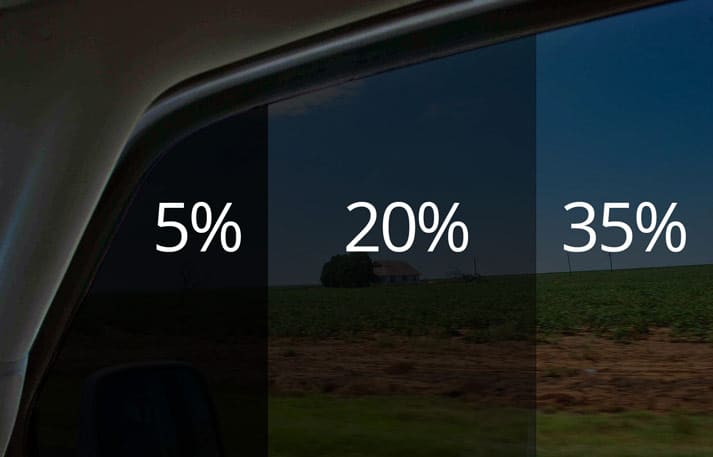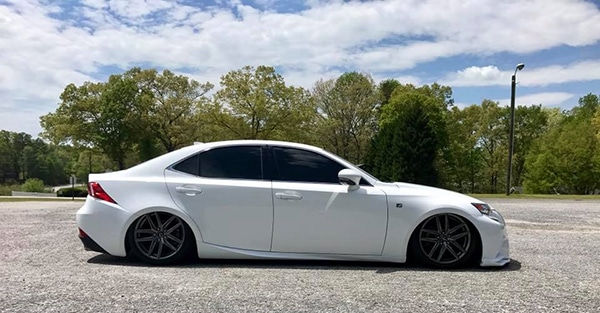Every state in the U.S. has its own set of laws regarding the use of automotive window tint. These laws are formulated on the basis of several factors including weather and traffic conditions.
There are guidelines for tint darkness, level of reflection, permitted colors, side mirror requirements, and violation penalties.
If you want to reap the benefits of installing window tint, then you need to be aware of and abide by these laws.
The tint laws in Indiana are relatively lenient when compared to other states in the U.S. In this article, we explore the subject in detail.
Is Window Tint Legal in Indiana?

Automotive window tint laws in Indiana date back to 2003 when they were first imposed.
The law doesn’t completely rule out the use of window tint, although it sets limitations on how transparent or reflective your tint film should be.
For instance, if your window tint ends up being too dark such that there is no visibility from the outside, there’s a good chance you’ll be pulled over.
Moreover, the legality can differ for different types of vehicle and even the position of the windows. Even within cars, there are some differences that you should be aware of.
Permitted Window Tint Darkness

When it comes to the permitted window tint darkness in cars, you need to be aware of something called visible light transmission (VLT).
This indicates the amount of light that the tint film filters through to the cabin. In other words, it refers to the darkness or transparency of the tint.
For instance, 10% VLT tints are a lot darker than 70% tints because they only let 10% of the light in. The higher the VLT, the lighter the tint.
Let’s take a closer look at the specific requirements of this law for different types of vehicles.
Sedans
Windshield: You can use a non-reflective tint above the AS-1 line.
Driver-side windows: At least 30% VLT is essential.
Passenger-side windows: At least 30% VLT is essential.
Rear window: At least 30% VLT is essential.
SUVs and Vans

Windshield: You can use a non-reflective tint above the AS-1 line.
Driver-side windows: At least 30% VLT is essential.
Passenger-side windows: No restrictions.
Rear window: No restrictions.
Acceptable Tint Reflection
Tint reflection and tint darkness are entirely different qualities. One measures transparency, and the other measures reflection.
Darkness and VLT has more to do with the amount of light that comes in through the tint, and in contrast, reflection refers to the amount of light that does not make it through the tint.
Below we’ve discussed the stipulated window reflection levels in Indiana.
Sedans

Windshield: Only non-reflective tint is permitted for the windshield.
Driver-side windows: The tint can be up to 25% reflective.
Passenger-side windows: The tint can be up to 25% reflective.
Rear window: The tint can be up to 25% reflective.
SUVs and Vans
Windshield: Only non-reflective tint is permitted for the windshield.
Driver-side windows: The tint can be up to 25% reflective.
Passenger-side windows: The tint can be up to 25% reflective.
Rear window: The tint can be up to 25% reflective.
Other Indiana Tint Rules You Need to Know
Other essentials for window tints are as follows:
Medical exceptions: You can seek exemptions if you have an official medical certificate.
Color: You can use any tint color.
Certification: Certified film for the tint is a requirement for the producers.
Sticker: There is no sticker requirement on your part.
Side mirror: There are no established limitations here.
Violation charges: Class C (up to $500) or Class A (up to $10,000) infraction.
State of Indiana Info

Indiana is a Midwestern state in the United States. It is also popularly referred to as the Hoosier state.
The state has a relatively large population, ranking 17th out of the 50 states in the country.
This state has several primary and metropolitan places where a large part of the population resides and works. Many rivers and lakes, such as Lake Michigan, Wabash River, and Ohio River, surround this state.
Population: 6,805,985
Capital: Indianapolis
Registered vehicles: 2,330,172
Total lane miles: 29,800
Number of highways: 14
Tint law references: Indiana Code Title 9 | Indiana Tint Law

